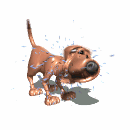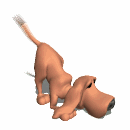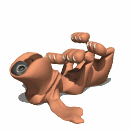|
|
|
|||||||||||||||||||
|
|
Literacy problems to solve for Key Stage 1, 2 and 3 Alphabetical Order
Reading
Holding it all together Paragraphs of writing are not usually just a bunch of sentences put together. A good writer will work very hard to make sure that all the sentences and ideas in the paragraph are linked in lots of different ways. This topic looks closely at one paragraph from an information book and explores some of the techniques the writer has used to hold it all together. From bone to stone
One way of making a passage clear is by using a good heading
All the sentences in this paragraph are about a small group of connected ideas. Use different coloured pencils to make all the words that you can find that are connected with the following:
The sentences in this paragraph are linked together by words such as this and they and which. These words either refer back to ideas that have already been mentioned or forward to ideas that are just about to be mentioned. For example, in the first sentence the word they refers forward to the word skeleton which comes up later in the sentence.
Some ideas are linked by using examples. These are often introduced by words like for example, for instance, like or such as. Find a list of examples in the passage that uses one of these words to introduce it.
Some ideas are connected by comparisons or contrasts. These are often introduced by phrases like normally..., but occasionally... or ranging from...to... There are two examples of comparisons in this passage. Can you find them?
This passage follows a pattern that is very common in informative writing. It begins with a general statement, it goes on to give a description that supports that general statement, and it finishes with a comment. Can you identify the three parts of the passage, the general statement, the description and the comment? Wordswork was from North East Lincolnshire's Literacy Team |
|
||||||||||||||||||
|
|
|









